If you’re at all invested in your natural hair journey or been on this route long enough, then you probably noticed that having a natural hair care routine or regimen is a huge thing. I mean everybody and their mama talk about it, and even if you just landed on the natural hair thang you feel the urgency of having one, even if you don’t know exactly what it is.
Today’s post is one of a 3-week post series, #HairRoutinePrepWork, where I will be guiding through the important information you need to know and consider before you start building your hair regimen to avoid setbacks. Here’s what you can expect over the next few weeks:
- 3 Mistakes You’re Making When Building Your Natural Hair Care Routine
- 2 Things You Need To Know To Build Your Hair Routine
- 3 Things You Need To Consider For A Stress-Free Curly Hair Routine
What Is A Natural Hair Care Routine?
When I started my transitioning hair journey, I for once didn’t understand the concept of a ‘hair routine’ or ‘hair regimen’. To me, these were foreign words put together. I understood them separately, but put together they didn’t make sense to me. (please tell me I’m not alone on this one. 😕 )
If you’re exactly where I was you may be thinking, What exactly is this hair routine thing? Why is everyone talking about it and when did it become so popular? Have I been sleeping under a rock the whole time this was happening or what? Seriously, I was this confused.
Well, to put you out of your misery or to clear any doubts you may have, a natural hair routine is a set of rules and practices you have when taking care of your hair. These will determine things like:
- How you clean your hair (shampoo, low-poo or co-wash),
- How often you clean your hair,
- When to trim your hair,
- What products you use on your hair (maybe you only want a brand or you want to avoid a specific product ingredient or ingredients),
- If you follow a specific methodology (Curly Girl Method, LOC Method, GreenHouse Effect, Water Only Washing Method, etc),
- How you keep or style your hair,
- Which building blocks will your wash day have (Pre-poo, Wash or Co-wash, Oil Rinse, Deep Condition, Moisturise),
- How to maintain moisture or hairstyles,
- and much more…
Are you freaking out already? Well, you don’t have to, many of the things I listed will come with time as you get to know your curly hair and deepen your knowledge of it. Luckily, this post is a good place for you to start, and if you’re really serious about achieving your goals you can use this hair journal to track your journey. You can know more about it here. Who’s your friend?! 😉

Still, why is it important you do all this?
The Importance Of Having A Hair Routine
Regardless of the reasons that brought you on this journey, I believe the main reason we’re all here is to have healthy hair (long hair can only come afterwards 🙄 ). Any hair goal you can ever have can only be achieved with healthy hair. We all remember how it felt to have stringy, shapeless hair or to have continuous hair breakage that never let you reach your hair length goals. Or maybe you remember having dry, flaky scalp or the itchiness.
Whatever the hair conundrum was, I think we can all agree our hair situation was anything but healthy, right? The simple fact a relaxer was used to straighten the hair implied the hair was no longer healthy, as does dyeing and bleaching the hair.
Having the rules and practices I mentioned before, plus following and practising them consistently is what will allow you to have healthy hair. Hair that is bouncy, shiny, strong and smooth and, as a consequence, hair that is able to retain hair length (Now you can think about length. Booyah! 😀 ). Keep a record of your hair journey to help you achieve your goals.

Nevertheless, having this knowledge doesn’t spare you from the struggles in your journey. There is always the danger you are applying the wrong rules and practices for your situation despite your best efforts and many times, it’s not even your fault.
Sometimes you’re looking for the information in the wrong place, there is conflicting information or you’re just following some well-intended, but bad advice.
This is one of the reasons why I created the Shed & Rescue coaching call, I was tired of seeing people following bad advice. People will often ask me why is their hair breaking or super dry if they were doing everything they were supposed to be doing. The problem is they’re often missing a step, doing too much, too little or doing something unnecessary and harmful.
In the meantime, here are some bad mistakes I address in my coaching call and that you could be making when building your hair care routine.
3 Mistakes You’re Making In Your Hair Care Routine
#1| Curl Type
Most people new to natural hair focus their whole attention on discovering their curl or hair type, and you know what?!…That curiosity is perfectly fine as long as it is not the base upon which you build your whole hair regimen.
You may be thinking, “But Monica, most blog post, videos and tutorials focus their attention on curl type?”
True, but it doesn’t mean it’s right. Curly hair types will overwhelmingly fall within type 3 (a, b or c) or type 4 (a, b or c) and the general belief is that these hair types have a set of specific characteristics that dictate or orient how they should be cared for or even what products to use on them.
I can’t tell you the number of times I read people asking for product suggestions, help with an issue they’re going through or asking help for a “good hair regimen” giving only their curl type as a reference. As if that is enough information (or the most important one, for that matter).
Why Curl Type is So Attractive and But So Deceptive
Most of the reasoning behind this belief is rooted in the characteristics of curly hair and how unique it is. Here are two features of curly hair and how they seem to support this ‘curl fascination’:
- If the cuticle (protective) layers of curly hair are unable to lie flat to retain hair moisture (paramount for natural hair) because of its shape;
- And the natural secretion (sebum) that (1) protects hair from external aggressions (such as the sun or the wind), (2) prevents quick moisture release and (3) helps the mechanical properties of the hair (lubrication, movement) is unable to coat curly hair in its entire length (again) because of its shape.
- Then the tighter the curl type the more likely it is that all hair falling into a specific curl type will behave and respond in the same way. Therefore, an identical set of rules and practices can be adopted for each curl type as it moves higher up the chart. Thus why people ask for support and feedback based on hair type.
It goes something like this: Curl Type X = Y Hair Products + Z Hair Practices or Hair Regimen.
However, if you’re doing this you are making a big mistake. Establishing your hair regimen on curl type is wrong because curl type doesn’t account for hair health, damage, genetic factors, hair care practices or porosity (an important indicator).
Additionally, most people have more than one curl type. It can fall within a curl type (3 or 4) or within two (3 and 4). In this case, what hair routine would you adopt?
Curl type is just one measure you can use to build your hair routine and, in my opinion, it’s definitely not the most important one to take into account.
#2| Co-Washing
Co-washing, or conditioner washing, has rapidly become the hair cleansing method of choice of many naturalistas since the drying effects of sulphate shampoos on curly hair became known. This is no surprise since they are able to clean the hair without drying it, they smooth it to help with hair detangling and they also help to retain hair moisture. At first glance, it’s definitely a winning combination in my book and yours too probably.
However, people often forget or don’t know that when using cleansing conditioners or conditioners to wash their hair these products leave behind conditioning ingredients on the hair strand that cause product residue (build up). These are the same ingredients that give the hair the amazing benefits I just talked about – smoothness, easy detangling and moisture retention.
The Need For Clean Hair And Scalp
Although sulphates have a negative effect on curly hair, they are not the anti-Christ. If you want to build a hair routine that fosters hair health and length you need to have a clean scalp and hair. If they’re buried under a layer of scum that encourages itchiness, dandruff or a flaky scalp and prevents moisture intake, then you are failing your target miserably. 😯
Co-washing is more suited for a mid-week wash or hair refresher. Use a low-poo shampoo (less drying) for your weekly hair wash and don’t forget to clarify at least once a month to remove product residue and to give your hair a breathing chance.
#3| Proteins
I’m guessing that moisture is such a main focus in everything that is discussed about natural hair, that it’s easy for people to forget about protein. No, I’m not talking about protein in your diet, although it is important too. I’m talking about deep conditioning treatments that feed the keratin bonds in the cortex of the hair to strengthen it and improve its elasticity.
It’s also a fact that many women stay away from proteins because they are ‘protein sensitive’ or because they had a bad experience with them.
On the other hand, you can also be a part of the group that doesn’t know how to go about proteins and believes that by focusing on moisture “you can never go wrong” since it is paramount for healthy curly hair and for a good hair regimen.
Well, you couldn’t be farther from the truth. Protein is always needed!
Why You Need Proteins
Even though our hair is dead from the moment it comes out of the hair follicle it is not immune to external damage and weathering. That’s why it is important to maintain the relative health is has.
With that said, the health of your hair is determined while it is still attached to your living body, inside the hair follicle. If you have a poor diet that will reflect on your hair, which will be more vulnerable to damage.
The best way you can maintain the health of your dead hair is by moisturising it and by strengthening it with protein. If you only focus on moisture, your hair can easily become over-moisturised becoming too mushy and soft and stretchy before it breaks off.
Adding protein to your hair regimen will balance this since proteins will give structure to the hair. However, if you also overdo the use of proteins, your hair can become dry, rough, brittle and break very easily. Thus why you need both – moisture and protein!
Not everyone needs protein in the same way, in Shed & Rescue, I like to look at hair health, hair care practices and environment to determine this. The best proteins to look out for are hydrolyzed proteins as they penetrate the hair shaft, others are too big and most of them will remain on the cuticle layer (where they can also help mend holes and cracks) and not in the cortex.
I hope this first post in the #HairRoutinePrepWork series, was as informative to you guys as it was fun for me to write it. If it was, don’t forget to share the hashtag on social media and tag us (@curlyhairlounge) so we can show you some love too. In the next post of this series, I will be talking about two very important things you need to know before you start building your hair regimen that can influence everything about it. Don’t miss it! You can even get a worksheet guide to follow this series.
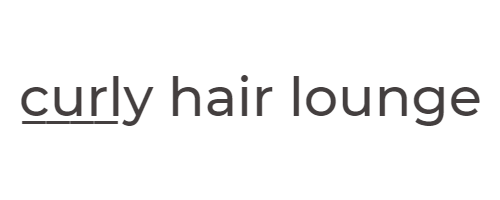
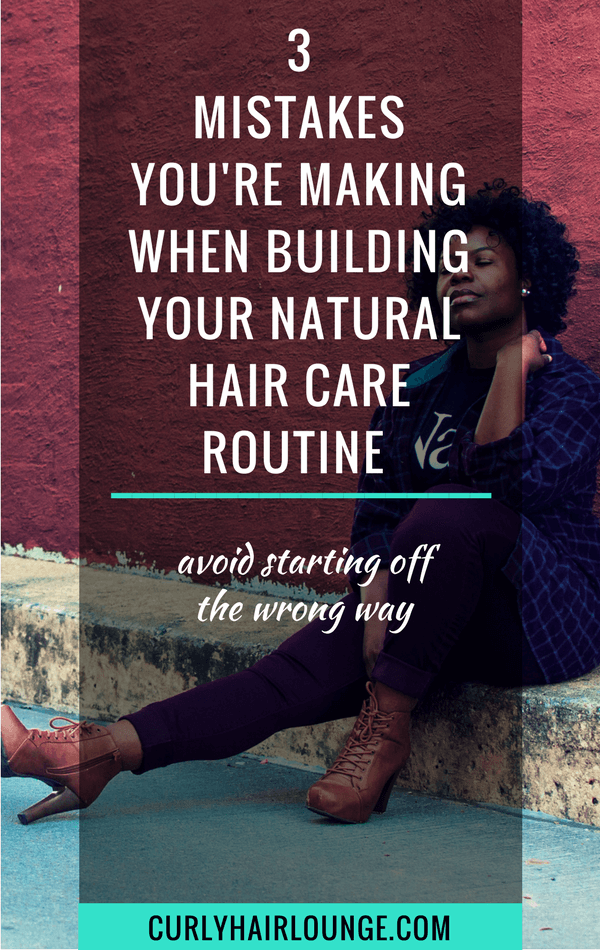


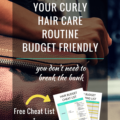
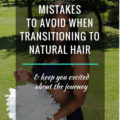
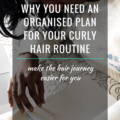
One thought on “3 Mistakes You’re Making When Building Your Natural Hair Care Routine”
I had so many problems with dryness when I first went natural. It was brittle and hard I wanted to go back to getting a perm. But I found a hair oil my girlfriend told me about. Its called The BEAUTIFUL OIL OF FAITH. I found it on Etsy. My hair now is so soft and growing. I love it!